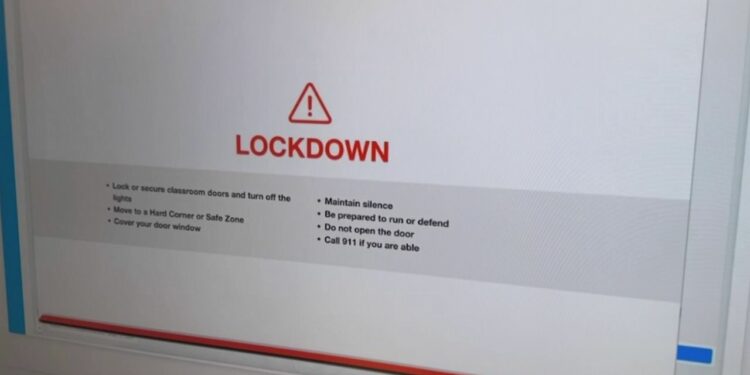TAMPA, Fla. — The phenomenon of active shooter drills and threats has become a prevalent reality for students today. A study conducted by the Social Dynamics and Wellbeing Lab at Georgia Tech reveals that these drills correlate with a staggering 42% increase in stress and anxiety among young individuals. Despite this significant emotional toll, experts argue that such practices are essential for ensuring student safety.
Essential Insights
– Research from Georgia Tech’s Social Dynamics and Wellbeing Lab highlights a 42% rise in stress levels linked to active shooter drills among students.
– The unpredictability surrounding lockdowns contributes additional anxiety for both students and their parents.
– Active shooter threats have far-reaching effects, impacting not just students but also teachers and families.
– A $2 million grant has been provided for Project SAFETY-2, supporting its initiatives through 2025.
The Reality of Threats in Tampa Bay: Impact on Families
“It feels like there’s always some kind of threat lurking,” expressed Brandon Jones, a father of two teenagers — one finishing high school and the other an eighth grader at Mulrennan Middle School.
Reflecting on this school year, he stated it has been filled with more active shooter alerts than any previous years he can recall.
“Receiving text alerts about lockdowns while I’m at work is terrifying because I have no idea what’s truly happening,” said Jones.
This level of uncertainty generates heightened anxiety not only among parents but also in the student body.
His son Zach mentioned experiencing dread following reports about threats circulating on social media platforms like Snapchat. “When I hear something alarming, it definitely occupies my thoughts; although it’s not something I dwell on every day,” he remarked.
Zach disclosed that during this academic year, he devised his own contingency plans outlining how to react if an active shooter situation were to unfold based on which classroom he is in—an unsettling notion for any teenager to consider at his age.
Brandon reflected somberly on how Zach’s concerns illustrate a troubling shift in childhood innocence: “He never thought about needing survival strategies when he was younger. Physically safe perhaps, yet there’s an undeniable psychological strain accompanying such awareness.”
Mental Health Concerns Amid Threatening Environments
This strain is echoed by Tameisha Hinton, research assistant professor at the University of South Florida (USF) and director of Project SAFETY-2. Funded by a $2 million grant from the Department of Justice through 2025, this initiative collaborates with Hillsborough County Schools to formulate effective threat management protocols.
“These threats foster feelings of despair among students who already grapple with increasing mental health challenges,” emphasized Hinton. She noted that these issues extend beyond just pupils; school staff members are deeply affected as well.
“There is an urgent need for skilled mental health professionals within schools to assist everyone involved during unsettling events—whether they happen nearby or remotely,” she added.
“Often educators must juggle multiple responsibilities while trying to maintain safety measures which limits their ability to provide immediate support.” Increased staffing dedicated specifically towards psychological care could alleviate some challenges faced by both students and staff alike.
Coping Strategies Amidst Chaos
The Jones family endeavors not to succumb entirely to fear’s grip during these turbulent times. “Threats exist primarily as tools intended to induce panic,” Zach stated wisely while reminding others not let concern spiral into paranoia.’
A mindset focused positively can help families appreciate every moment more fully:
“I say goodbye each morning knowing my children are stepping into unpredictable circumstances where anything can occur,” Brandon concluded thoughtfully.
“I remind them daily: enjoy your day; know you’re loved.”




























